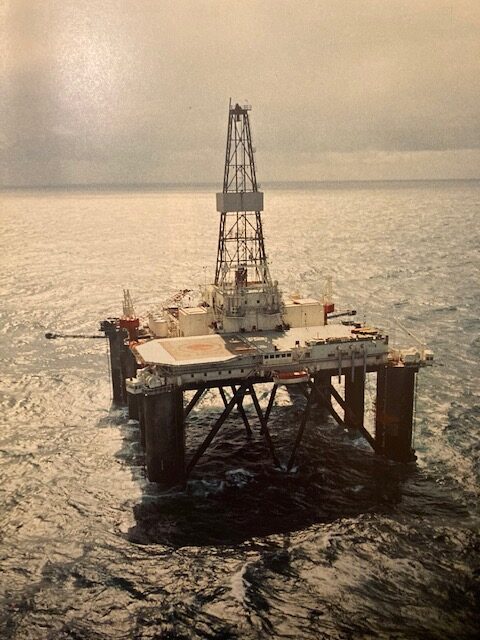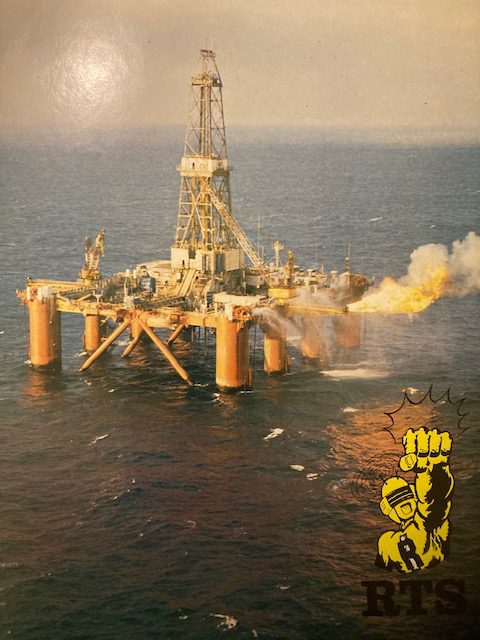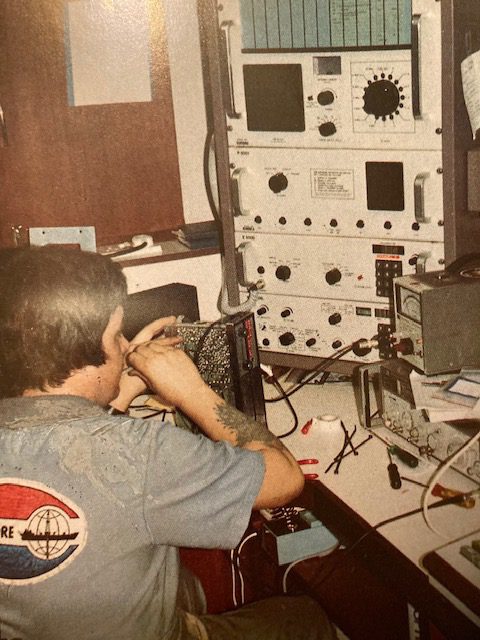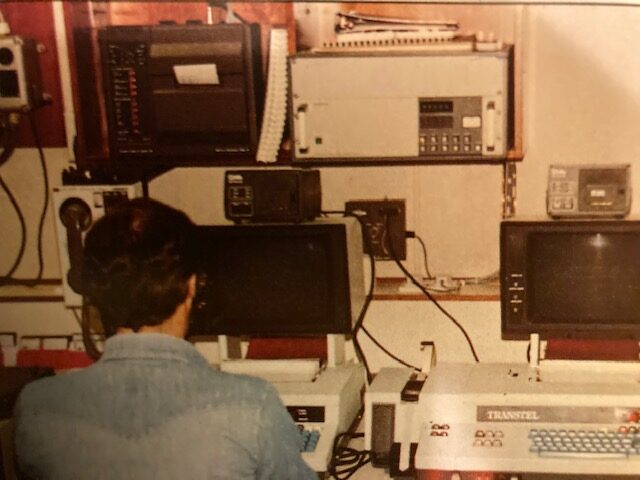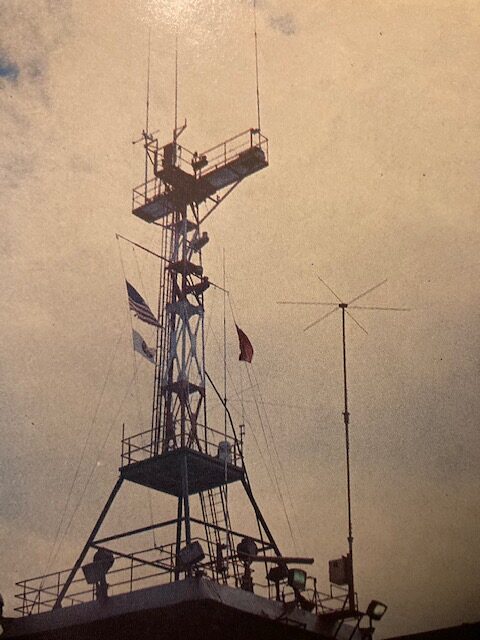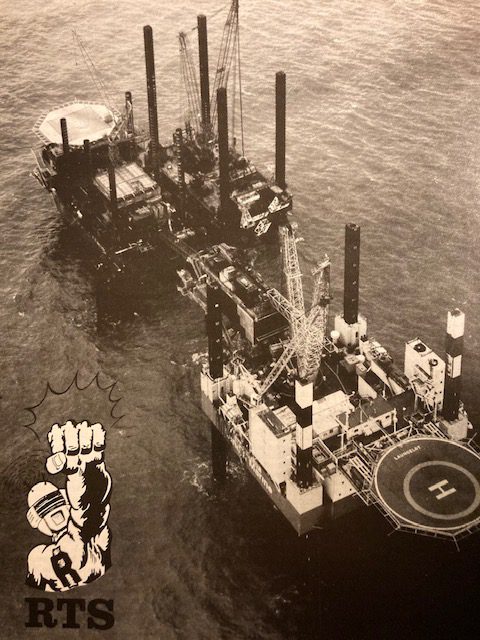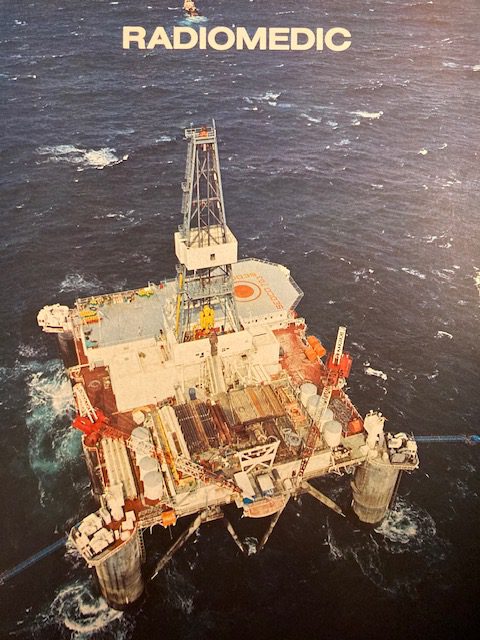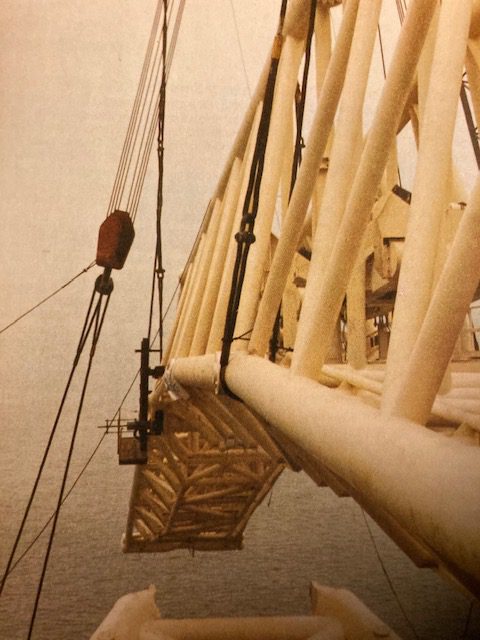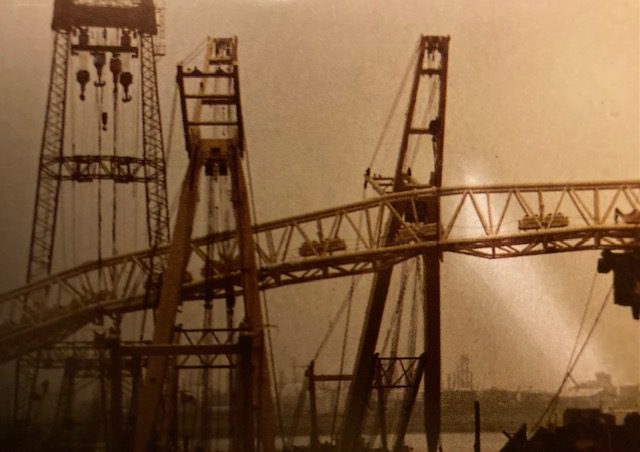Out of the Camp Ch. 17 – Worlds & Oysters!
With all this stuff swirling around in my head after so many years it’s sometimes difficult to remember the order of events but I do know that our daughter was born before we left MacDuff. I was reminded recently that when Mary went to Aberdeen Royal Infirmary to have the baby, a dear friend in MacDuff, Christine, took the boys in and with her family and looked after them until Mary came home. We were always very grateful to her for that. With all that was going on with the business and my increasing travel, there was no way I would have been able to cope had she not been there for us. It wasn’t too many months following that when we made the move to Peterhead, and it seems now like no time at all before Mary was up and about again and off to Avenue Henri Matisse, Brussels for her McDermott meeting. Paul Coelho once said that when you really want something, all the universe conspires in helping you to achieve it. Were this not true, how else could we have found ourselves surrounded by angels furthering this impossible dream towards becoming a reality. Mrs. Hay then came into our lives; we never did find out what her Christian name was. She began cleaning the house for us and from time to time her children who were around the same ages as ours would accompany her. As time went by, she would occasionally look after them and sometimes take them home with her to the family farm in the countryside outside Peterhead. The children loved it. I don’t know how big the farm was, but they had animals there and enough acreage that the kids could run themselves ragged all day such that they’d come home exhausted and happy, and put up no resistance when it was time for bed.
I’ve been digging into old diaries and notebooks from that era in an attempt to reignite memories long ago erased, or hopefully, stored in a chimerical mental lockbox for possible future reference. In any event, on scanning these interminable scribblings, a number of things jumped out at me not the least of which was their volume. I was clearly very busy back then and travelling all over the place attending meetings, conventions, PR trips to clients and potential clients, negotiating pay rates with Union representatives (really!) and by this time, signing up for the next May annual soiree to the Offshore Technology Conference (OTC) in Houston, Texas. The Aberdeen Press & Journal in partnership with NESDA, the North East Scotland Development Authority, organized this 5-day trip and would block book seats on a scheduled flight and make hotel reservations in Houston for participants. I think it was 1977 or 78 when I made my first trip to OTC, also my first trip to the USA and I had a blast. At the time we were repeatedly told that OTC, held in the Astrodome and Astro Arena was the biggest convention of any industry anywhere in the world, by far. In addition to attending seminars and presentations, we were free to wander around the exhibition halls and also outside to the Astro Arena where outdoor exhibits were set up, mainly demonstrating heavy equipment, cranes or drilling derricks and the like. There were also events set up such hospitality parties and on one occasion, we were taken on a trip to a Rodeo on a ranch some distance away from Houston, my first experience of real-live cowboys and real-live lunatics riding on real-live bulls! Seriously though, everyone on the outing had an absolute blast. I would attend OTC with the P&J/NESDA group most years after that until around 1985/86. On one occasion our flight home was unexpectedly diverted to New York JFK due to a technical problem and we were delayed overnight in a motel on the airport perimeter. Not a pleasant recollection.
Meanwhile, I was reminded, having plowed through copious notes from that time, that that our dealings were actually with Oceanic Contractors, a subsidiary that was ultimately absorbed into McDermott International Inc., and Jackson Marine, unless I’m mistaken, were similarly merged with the separate, though related, entity, McDermott Inc. It was around this time too that Tom Bicknell, Regional Manager of Southeastern Drilling Services (SEDCO) in Aberdeen, gave us our first break with a driller, when we were asked to supply radio operators for the Sedco 704 which was drilling in the North Sea. He also promised further work and, in particular, were awaiting early delivery of the MSV Tharos firefighting and support vessel from Japan that would be crewing up on its arrival and which famous rig firefighter, Red Adair had a hand in designing. These developments ushered in an expansion of the business that was both exciting and scary. Exciting because expansion was certainly our intension, but scary because rapid expansion would likely run us into serious, problematic cash flow challenges unless we quickly set up some financial mechanism like invoice discounting or factoring. Anyway, that’s just some boring business detail and, not to labor it further, we eventually figured out.
Over the next 2-3 years Brown & Root continued construction activities in the Norwegian Ekofisk Field in addition to having our radio operators on their pipe bury barge BAR 331 working on the North Sea Buchan Field, we had additional barge work from McDermott with the arrival in the North Sea of the crane vessel DB 101 (formally Narwhal) and the catamaran support vessel, MV Duplus. Sedco also kept us really busy with more rigs arriving in the North Sea, initially the Tharos firefighter, drillers Sedco ‘H’ and Sedco 707, all requiring manning of communications facilities. Sante Fe International had the ‘Apache’, a brand-new DP steel pipe laying vessel heading for Leith Harbor, Edinburgh, from the Galveston, Texas shipyard, and we would be sending radio operators there to meet the vessel before departure to the Buchan field where it was going to be laying pipe along the trench created by BAR 331. We were quickly diversifying into a quasi-travel services operation, initially setting up arrangements for crew changes via either helicopter or supply boat to various offshore locations. Then, inevitably as activity in the North Sea would wind down each year at the onset of winter and vessels would depart to other regions, we found ourselves making travel reservations for crews travelling to various destinations worldwide.
We initially became busy offshore West Africa supplying communications personnel and occasionally medics for mainly McDermott vessels working in Nigeria, Côte d’Ivoire and Cabinda, Angola. We’d often hear wild stories from the men of their escapades in foreign countries. There were frequently yarns about the bribes they had to give officials to get in and out of various territories. When these items were listed on their expense sheets they had to be “sterilized” before going on record and submitted to clients as the government of the day said companies caught doing this would face stiff penalties. An unrelated but wild anecdote involved four technicians travelling via Paris Orly Airport to Kinshasa in the Democratic Republic of Congo where they had to make a stop and change planes at Luanda, Angola. When they boarded the aircraft for the short the connecting flight, they realized the plane was a World War II McDonnell Douglas DC-3 and they said it obviously had long ago seen better days. There was no partition between the cockpit and the main cabin, and they were a bit nervous getting on board particularly when they saw the co-pilot, a huge black Labrador, perfectly relaxed and happy, and sitting in the co-pilot’s cockpit seat peering out of the windscreen. The actual pilot, a huge and apparently local character also was quite a sight in his vest and vintage military cargo pants, and didn’t provide much in the way of reassurance. Thankfully the flight was uneventful apart from the rattling, the deafening propellor and wind-noise, and landed safely in Kinsasha. The trial wasn’t over yet however, as the final 10-hour leg of the journey to the port at Cabinda was on the back of an open top truck, much of it through heavy jungle where they found themselves ducking and weaving to avoid branches among other things.
On Another occasion we sent a team of 12 men to Tamano Shipyard, Japan for a month to build the radio room and install communications and navigation equipment, including receiving and transmitting antennas, on a huge new construction vessel. They also were charged with installing a public address system including running wiring and installing speakers in 900 cabins. The shipyard was huge, and the technicians as with all workers, were issued with bikes to travel between the accommodation block and the vessel. They also were permitted to use them when off duty to go into town in the evenings. Apparently, the lanes in the area were all bordered with ditches and over the course of the month, several of the men heading home in the evening after a night out and somewhat the worse for wear, ended up in one or other of these ditches and on a few occasions sustained injuries serious enough that they ended up in the shipyard hospital. When they eventually got home many of them still bore the evidence of their wayward dalliances, which included a black eye, facial and other bruising, several cuts and scrapes, three sprained wrists and a twisted ankle. It seems that there were literally hundreds of bikes on these lanes ridden by workers from many countries and nobody seemed to know for sure which side of the road they should be riding on. At least that’s what the techs told us when they got back.
Another yarn took place offshore County Cork in Ireland where our radio operators were working on two barges, one, a pipelayer and the other a trencher. It seems that the trencher had arrived a week before the pipe barge had got there and had started trenching from the Kinsale shore out towards the gas field. When the pipe barge did arrive and to allow both barges to work simultaneously and thereby save time, the trencher stopped work and headed out to the gas field where it started trenching again, this time towards the shore with the object of linking up the two sections of trench to make a single furrow for the pipe from the gas field to landfall. Meanwhile the pipelayer began laying pipe from the shoreline in the newly dug trench out towards the gas field. Well, as the Bard, Rabbie Burns is alleged to have said, “The best laid plans of mice and men gang aft awry” or, not to put too fine a point on it, they missed!
That’s to say, the trencher heading for shore missed the pipe! They knew how many miles of trench they had dug from the shore when they stopped to head out to the field once the pipelayer had arrived, and therefore knew how far from the field the end of the shore section of trench was and where they’d meet it. However, at some point as they proceeded towards the shore, they realized that they’d come too far and yet the coordinates indicated that they should have met the landward section of trench some time ago. I never did hear the end of the story and how the problem was ultimately resolved. But it was! I know this from reading in the trade press a year or so later that gas extraction had commenced and was being piped ashore to Kinsale Head.
Images.
(1) Semi-submersible Drilling Rig, ‘SEDCO 703’ in the North Sea, 1977. (2) Semi-submersible Rig, ‘Bendoran’ testing Well Number 2, an appraisal on Block 20/2 in the North Sea, 1981. (3) A ‘Radioman Technical Services’ (RTS) Technician engaged in comms equipment fault-finding procedures. (4) An RTS Teleprinter Installation in service offshore. (5) Main Tower on a Construction Vessel “bristling” with masts and antennas installed by RTS Technicians. (6) Offshore support vessel, ‘Launcelot’, engaged in maintenance ops in Southern North Sea, Dutch Sector. 1983.(7) Semi-submersible Rig, ‘SEDCO 703’ in North Sea, 1979. (8) The ‘Stinger’ on McDermott’s Lay Barge 200. (The “Stinger” is a cradle used to gently lower newly welded pipe sections onto the ocean floor as the barge moves forward.)
